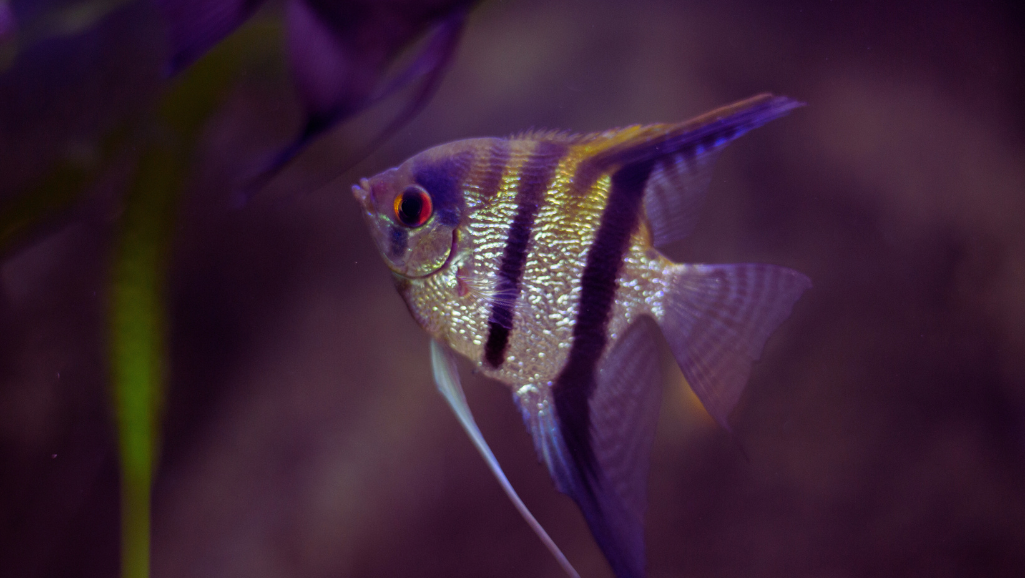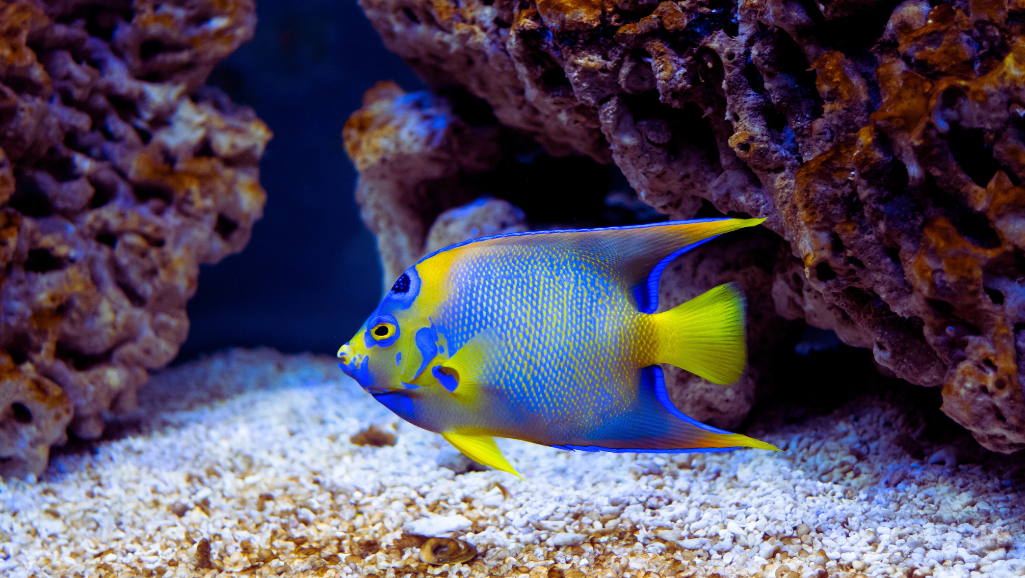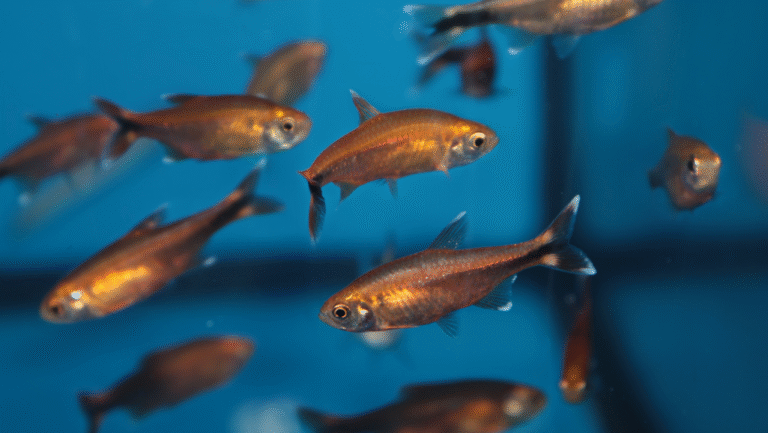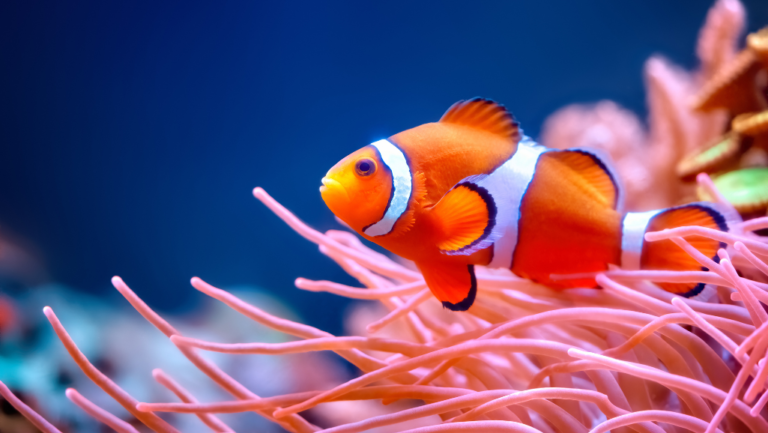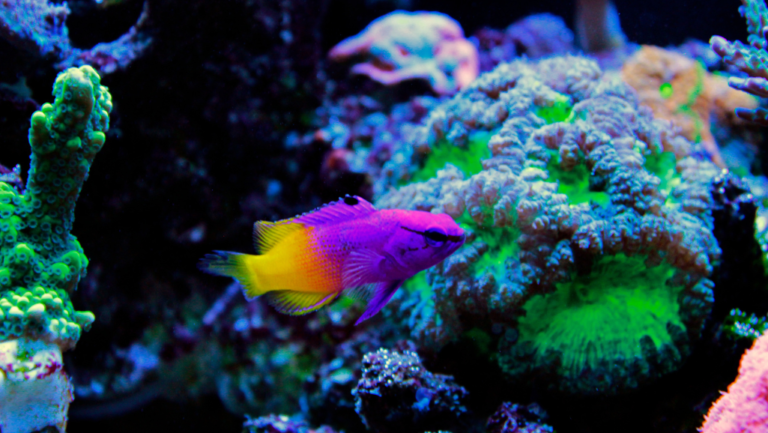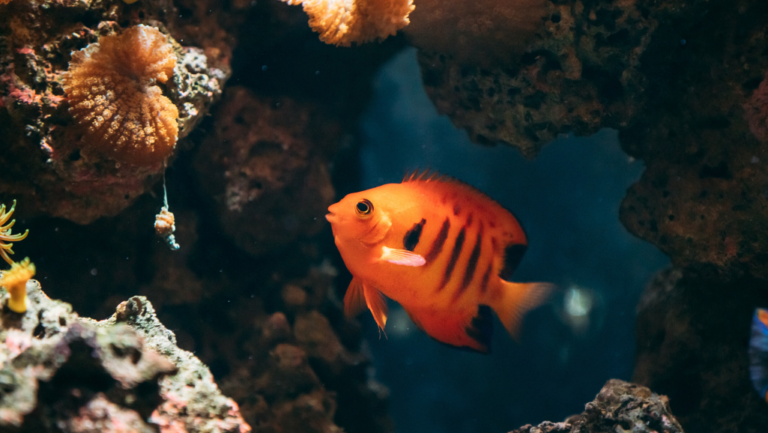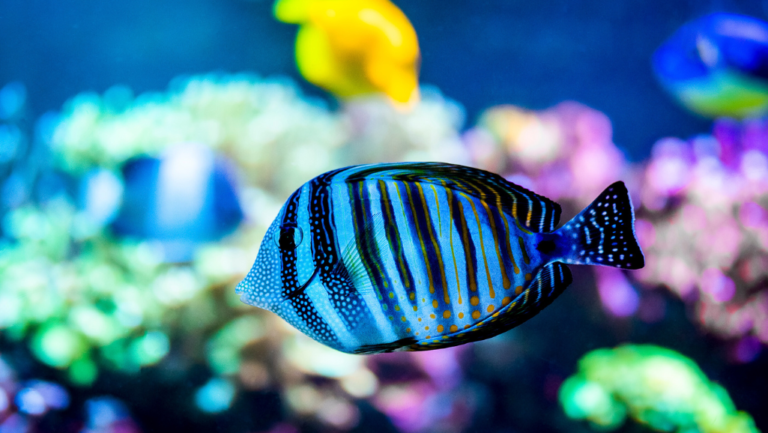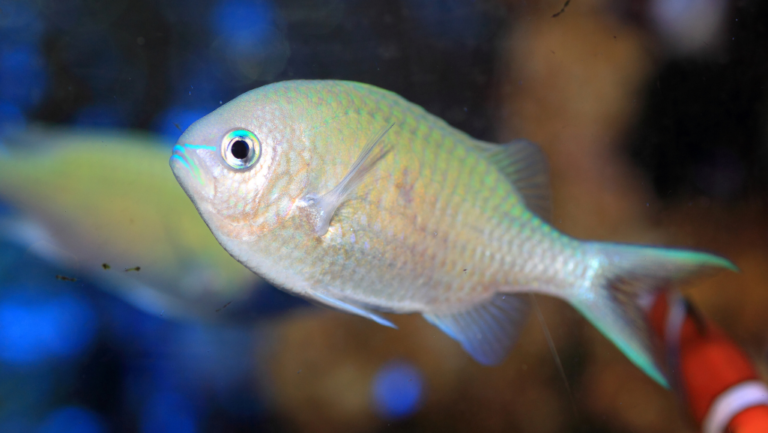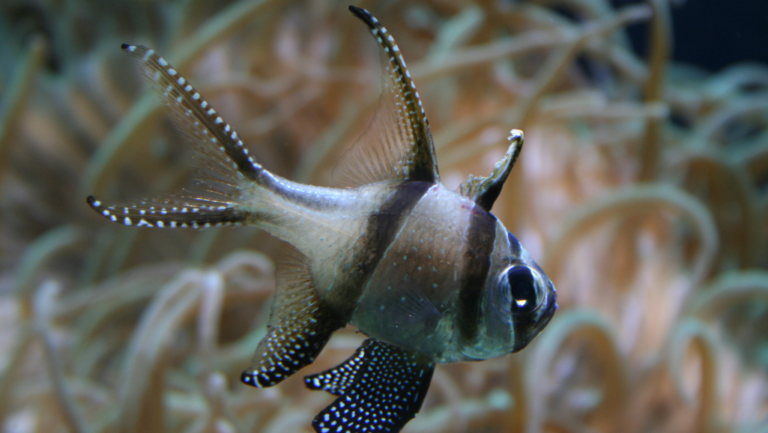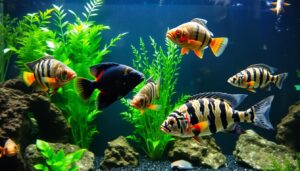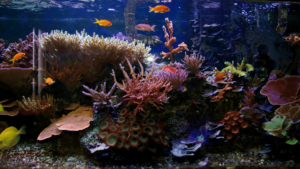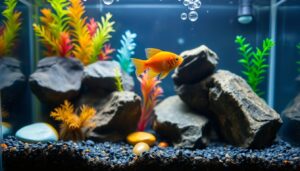Bring bright color and lively personality to your tank with a Coral Beauty Angelfish prized for deep purples and vivid orange highlights. This small saltwater fish reaches about four inches and thrives in well-planted tanks with lots of rock and hiding spots.
Over time, these active grazers cruise live rock and display curious behaviors that reward steady care. They do best in at least a 70-gallon aquarium that supports natural grazing and swimming.
This guide will help you recognize a healthy specimen, set up an ideal home, and balance algae and meaty foods for long life. For a trusted source and purchase details, consider this listing at LiveAquaria to learn more about sizes and availability.
Key Takeaways
- Compact saltwater fish with striking purple-to-orange coloration suits larger tanks.
- Needs plentiful live rock for grazing and hiding to feel secure.
- Feed a mix of marine algae and meaty foods for best color and health.
- Can be semi-aggressive; consider reef risks and tankmate choices.
- Quarantine and careful sourcing reduce disease risk; captive-bred options are preferable.
Meet the Coral Beauty Angelfish: Identification, Origins, and Personality
A compact reef favorite with vivid hues, the coral beauty angelfish is easy to spot in a well-stocked tank. The scientific name appears as Centropyge bispinosa (also listed as Centropyge bispinosus in some sources), and it is commonly sold under several names like Dusky, Spined, or Twospined.
Colors and pattern
The body shows deep royal to purplish blue with iridescent orange to yellow bars. Dorsal, caudal, and anal fins often carry bright blue margins that set this small fish apart.
Range and habitat
Native to the Indo-Pacific—from the Great Barrier Reef, Indonesia, and Fiji to parts of the Indian Ocean—this species thrives on current-swept, coral-rich reefs.
Size and temperament
Adults reach about 4 inches and spend their days cruising rockwork and grazing microalgae. They are hardy and semi-aggressive, often asserting territory against others of similar size.
“Steady cruising, frequent nips at film algae, and quick retreats into caves are signs of a content fish.”
- Identify by name plus blue-edged fins to avoid mix-ups.
- Plan tank rockwork to encourage natural grazing and reduce stress.
- Allow space so size and bold behavior don’t spark persistent conflict.
Coral Beauty Angelfish Care: Tank Setup, Diet, and Reef Considerations
Create a stable environment and varied feeding routine to bring out optimal color and calm behavior.
Start with space. A minimum 70-gallon tank gives this grazer the room and territory it needs to explore and rest without constant stress.
Build lots of live rock, caves, and overhangs so the fish can forage and find hiding places when startled. An established rockwork layout reduces fights and encourages natural grazing.
Keep water steady with strong filtration and surface agitation. A netted lid is a simple precaution to stop surprise jumps during acclimation.
Feed a mix of marine algae, Nori, Spirulina, and small meaty items like mysis shrimp. Supplement with quality pellets and flake foods in small, frequent portions.
“Encourage film algae on selected rock faces — it’s both food and enrichment.”
- Not fully reef safe: may nip at soft corals or sessile invertebrates in a reef tank.
- Avoid mixing dwarf angels to lower territorial stress and provide visual breaks in the aquarium.
- Quarantine without copper; levels near or above 0.15 ppm are unsafe for these sensitive fish.
When possible, choose captive-bred coral beauty specimens in the U.S. They adapt to prepared foods faster and show better parasite resistance, easing the transition into your saltwater tank.
Pro Tips and Pitfalls: Set Your Coral Beauty Up for a Long, Healthy Life
Set the stage by balancing varied foods and smart aquascaping so your fish spend energy grazing, not harassing corals.
Feeding variety to prevent coral nipping and keep angels satisfied
Keep your coral beauty fed on a mix of algae-based staples and small meaty items to cut down on nips. Offer Nori on clips, rotate Spirulina-rich options, and add mysis shrimp now and then.
Feed smaller portions several times across the day to mimic natural foraging. This steady rhythm helps direct curiosity toward the menu, not toward sensitive corals.
When not to combine species: Flame Angels and other dwarf angelfish in the same tank
Mixing multiple dwarf angelfish often sparks territorial fights unless you have large size and lots of live rock. For most reef tank owners, one centerpiece angel brings far more harmony.
- Give plenty of hiding places, broken sightlines, and room to reduce stress.
- Watch behavior for the first days and weeks; chasing or frayed fins mean change the layout or stock list.
- Keep a simple log of foods and coral responses to spot what reduces nipping over time.
“Stable routines, varied foods, and strong rockwork are the easiest ways to enjoy bright color and calm behavior.”
Conclusion
Create the right home and habits, and this colorful saltwater fish will reward you with lively behavior and lasting health.
Prioritize a mature, 70+ gallon tank with plenty of live rock, good flow, strong filtration, and a netted lid. Feed a balanced diet that blends algae-based items with select meaty foods to keep color and energy steady.
Watch compatibility in your reef tank. This species may nip at corals, so avoid stacking dwarf angels unless your system is large and well structured. Quarantine carefully and never expose sensitive fish to copper near or above 0.15 ppm.
Opt for captive-bred when possible. With steady care, appropriate size planning as they reach about 4 inches, and small daily habits, your aquarium can become a vibrant, long-lived display. Learn more in this helpful care guide.

